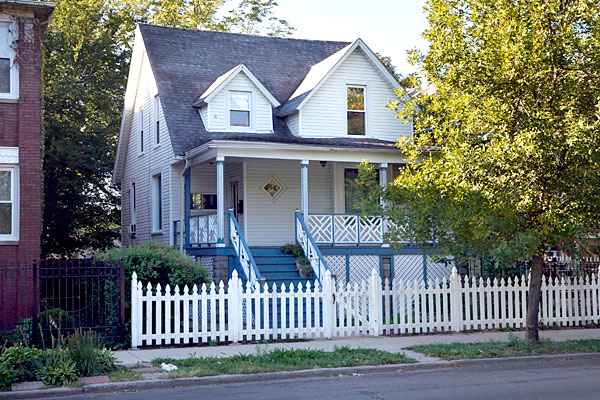
Photo: Michael Tercha/Chicago Tribune
African-American and Hispanic homebuyers pay more for homes than white and Asian buyers, according to research by four economists—and the biggest differential they found in the four cities they studied is for black buyers in Cook County.
For the four cities in the study—Baltimore, Chicago, Los Angeles, and San Francisco—African-Americans on average paid 2.8 percent more than whites. But in Cook County, Blacks pay 5.4 percent more than whites, according to the study titled “Estimating Racial Price Differentials In The Housing Market,” which was initially released in May 2012 but revised and re-released in late April. On the median transaction price of $179,999, the study notes, blacks in Chicago and Cook County would have paid $8,999 more than whites for comparable homes.
In the counties outside Cook, the differential is 2.4 percent, lower than the four-city average.
Chicago and Cook County Hispanics paid a 3.9 percent premium to buy a house, the study said, and in the collar counties the difference is 1.2 percent. The average premium Hispanics pay in the four cities included in the study is 2.7 percent. The premium paid by Chicago/Cook Hispanics comes out to about $7,019.
The data do not point to race-based preferential treatment for white buyers, according to the study’s lead author, Patrick Bayer, chair of the economics department, who grew up in the city’s Chicago Lawn neighborhood. The team of researchers, which included University of Illinois at Chicago economist Marcus D. Casey, controlled for the race of sellers and buyers as well as for several other factors. Their report describes the price differentials but does not conclude why they exist, although—because of the controls—the authors feel confident that racism among sellers isn’t the primary cause.
Instead, Bayer says, key factors may be that Black and Hispanic buyers may have less experience in buying homes and have had more frustration in finding homes that are available to them, so they are less likely to “negotiate hard from the asking price.”
The study covers all homes that sold more than once between 1990 and 2008—in Chicago, that’s 384,000 properties—and how their prices moved on the later transactions. Then each individual home’s price movement was compared to the norm; in Cook County, those that sold to black buyers (regardless of the race of the seller) went for an average of 5.4 percent more than those that went to white buyers. The advantage of a broad study of same-home sales, Bayer explained, is that past studies looked only at what people pay on a one-time basis. Because Blacks and Hispanics frequently have lower incomes and less household wealth than white or Asian buyers, he said, those types of studies tend to show them buying the lower-priced homes in any given area. Looking at price movement from one transaction to the next goes deeper, to how prices change over time.
In an interview Tuesday, Bayer noted that because the rate of homeownership among Blacks and Hispanics is lower than that of whites and Asians, more of the Black and Hispanic buyers in the study would have been first-time buyers. First-timers are typically less experienced with real estate, “and more likely to think they have to pay closer to the asking price,” Bayer said.
The study stretches way back to the pre-Internet days when buyers had to rely much more on a real estate agent to find homes in their price range and desired neighborhood. In the earlier years contained in the study, Bayer says, Blacks and Hispanics may have experienced challenges rooted in racism like not being shown all the available houses so they could develop a detailed understanding of what a particular home is worth vs. the competition, as well as having some white sellers openly reject their interest in a home. Bayer refers to these as “higher search costs” that could prompt those buyers to negotiate less aggressively for fear of having to get out and look for another home to buy. A study of only the later, Internet-saturated years when buyers of all races can do more property research on their own might show a narrower gap, he said.
Nevertheless, Bayer believes that part of the reason Chicago has the largest gap between what blacks and whites pay for homes may be “the historical very rigid segregation of Chicago and Cook County.” He points out that the lingering effect of black-white division on home prices, if there is one, dissipates outside Cook County, where the differential is less than half what it is inside Cook.


